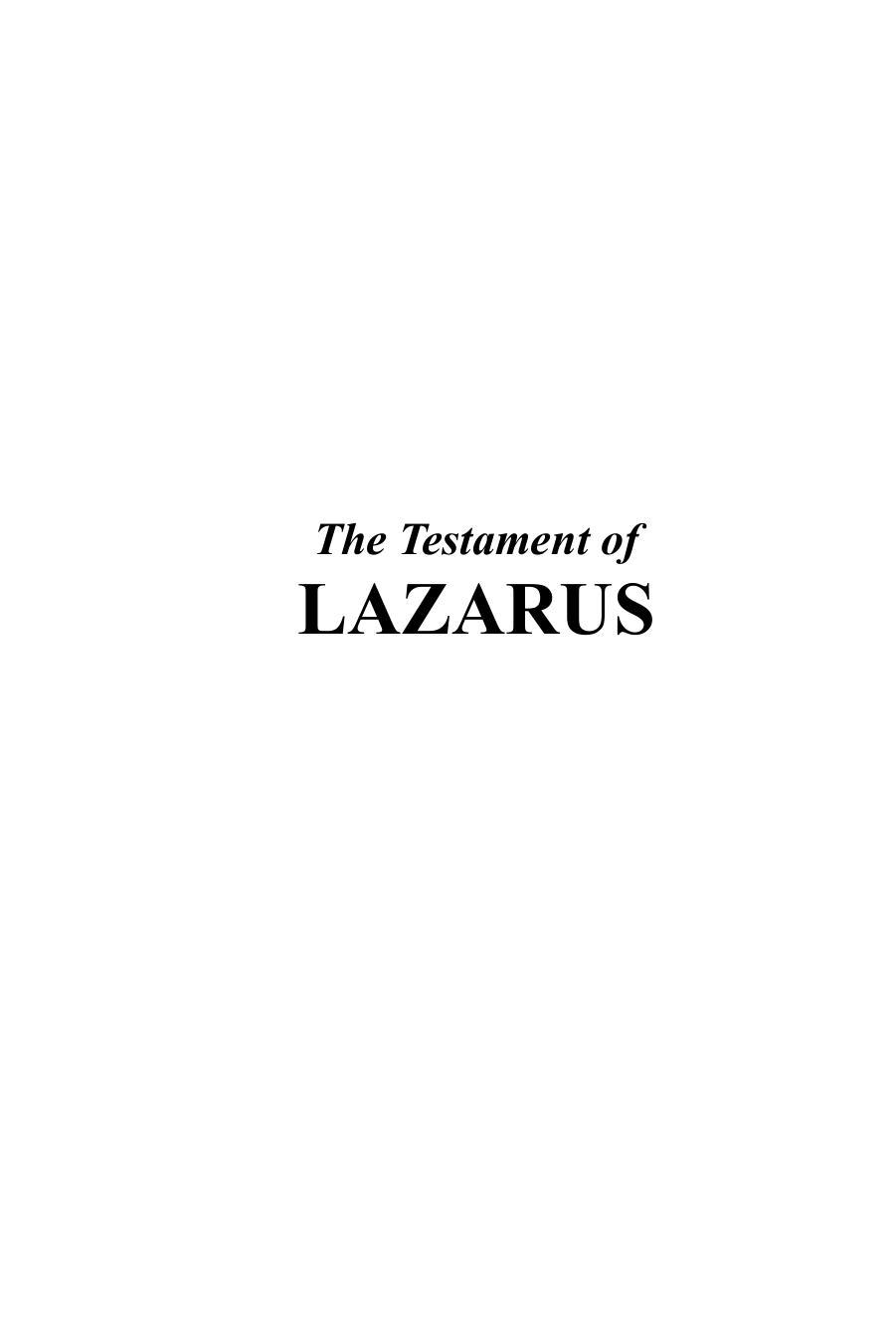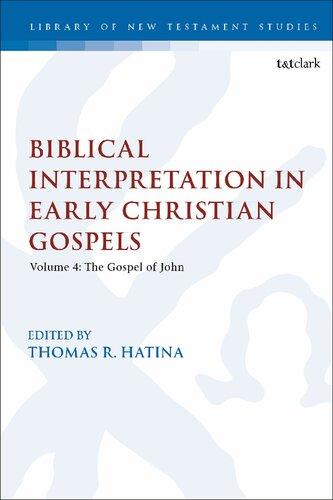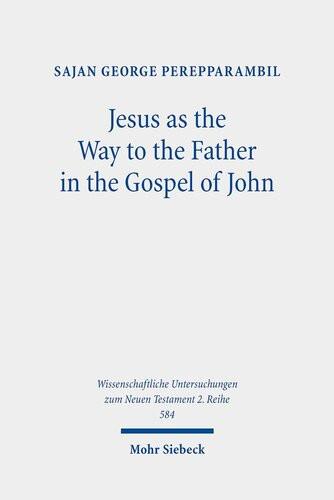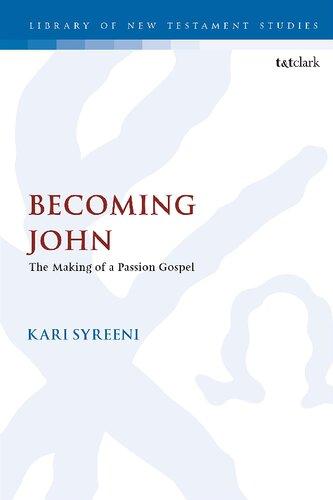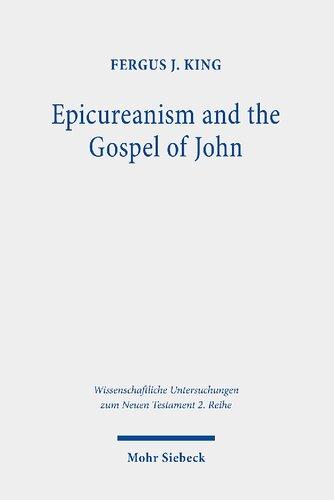CONTENTS
INTRODUCTION i
1.SAMARITANFOUNDATIONS 1
AbriefdiscussionontheculturalcontextoftheJesus’mission,withrespect to the mentioning of Jesus as “a Samaritan,” i.e., the schism at Sinai, the northern tribes and their belief in their own messiah, and the basis of the RemnantmotifthatpermeatesJesus’theology.
2.THEMEETINGNEARQUMRAN 14
Jesus and John first meet across the River Jordan out on the salt flats that form a symbolic starting point for Jesus’ campaign. The first disciples are introduced and their significance within the “twelve” is demonstrated by deconstructing their names. Time references in the gospel are vital to its interpretation;theyrevealanintentionalpattern.
3.STATEMENTSOFINTENT 36
The wedding at Cana is Jesus’ first open declaration of his mission to symbolicallyreunitethetribes.Ezekiel’sBrideofGodthemeisintroduced. Jesus’attackonthetempleinstitutionisexplained.
4.MARTHA 53
The character of Martha is assessed in terms of mythology and of her relationshiptoJesus.
5.NICODEMUSANDTHESONOFMAN 58
The entire scenario of Jesus’ discussion with Nicodemus is an echo of that between Uriel and Ezra/Salathiel in 2 Esdras. The ‘Son of Man’ concept is discussed.
6.THEMEETINGATQUMRAN 72
Jesus moves closer into John’s territory and tensions build; he is seen by sometobeadubiousupstartbutJohnisinitiallysupportive.
7.SAMARITANWOMAN 76
The Bride of God theme is acted out in the chief female character of the gospel; her first entry into the narrative is as the representation of the ‘adulterous’ Israel. Jesus comes to Jacob’s Well in search of this woman; shehasaspecificdestiny.TheideaofachildofJesusisputforward.
8.THESONOFTHEMAN 87
Continuingthistheme,theBrideofGodpatterndemandsthatinpreparation for the newkingdom, she must be reunited with her ‘lost’ companions; she represents the northern tribes, and the next male character represents the southerntribes.Theidentitiesofthe‘sickboy’andhisfatherarediscussed; theladwillbecomeJesus’protégée.
9.LAMEMAN 92
No cure takes place in this scene; it is a metaphor for the corruption and impotenceoftheextantpriestlyinstitution.The‘lameman’isoneofJesus’ moretroublesomedisciples.
10.SAMARITANREBELLION 100
Historical evidence provides a probable explanation for the feeding scene andthesubsequentturmoil;thegospel’schronologyisquestioned.
11.STUMBLINGBLOCKS 120
Jesus’strangespeechabouthisfleshandblood,whichcreatesconfusionand dissentionisexplained.Petershowshistruecolours;Nicodemusexploitshis positiontoassistthecause.
12.ADULTERESS 128
TheadulteressisthesameSamaritanwomanJesus‘elected’atthewell.This isatestingofJesus’apparentclaimtohigh-priestlystatus.Hedemonstrates a keen knowledge of the law and of scripture, turning the tables on the accusers.Thequestionofmarriagearises.
13.ESCALATION 137
Jesus’ mission takes on a new level of intensity; he challenges the temple priests in their own territory and castigates their lack of duty and honour. Jesus’birth-yearispotentiallydiscovered.
14.THEBEGINNINGOFTHEEND 144
Jesus’protégéesubmitstoanarcaneinitiationrite;heproveshimselfworthy of becoming Jesus’ right-hand-man and deputy. This angers the Pharisees andinitiatesaprecariousaftermathfortheyoungman.
15.LAZARUS 157
Knowinghistimeisnearlyup,Jesusmustmakeonefinalefforttoshow‘the world’ what he means and what is at stake. Lazarus is not dead; he is incarceratedbytheSanhedrin.
16.MEAL1:SIXDAYSBEFOREPASSOVER 181
The first meal scene is one of celebration and preparation for the last day; Mary’s actions are explained. Judas shows his disdain; the entry into Jerusalem through a symbolic gate is a demonstration of Jesus’ Samaritan roots.
17.MEAL2:THEDAYOFPREPARATION 192
The second meal scene focuses on the ritualistic preparation for the disciples’anticipatedentryintothe newkingdom.The‘beloveddisciple’is named;Petershowshistruecolours;theIscariotisexplained;theparakletos isdefined.
18.LAWANDORDER 204
Many clues lead us to where Jesus is, physically, within Jerusalem, challenging tradition. The mutilation of Malchus is given new meaning; Peter’sdenialsarediscussed.
19.TRUTHANDCONSEQUENCE 221
The ‘custom’ of release is clarified. Pilate seeks a reason for killing Jesus without implicating himself; the “Jews” provide one. Jesus is mocked as a false king but the symbolism is often underestimated. Herod fears for his own position. Someone else is crucified on Pilate’s command. Vestments aredescribed.
20.CULMINATION 244
Maryis now esteemed andis named “the Magdalene.”Clopas andhis wife are explained. Jesus makes his last will and testament, handing over the responsibilityforhisfamilytohisright-hand-man.Jesusreceivesadrugthat makeshimappeardead;the piercingof his sideis unexpected.The identity ofJosephofArimatheaisrevealed.
21.SECRETSANDSURVIVAL 253
Themyrrhandaloesarebothsymbolicandtherapeutic.TheplanforJesus’ escapeisdiscussed;thesiteofGolgothaandthatofthemakeshift‘tomb’are revealed.Thetransferenceof authoritytoJesus’ ‘deputy’takesplace.Jesus survives.Peteristested.
22.EPILOGUEANDPROLOGUE 280
The gospel’sepilogue iswrittenbyanother hand,i.e.,someoneclosetothe innercircleofdisciples,inanefforttoreiterateJesus’determinationforwho wouldsucceedhim.Peteristested.Theprologueiswrittenbyalaterauthor.
23.CONSIDERATIONS 293
Many aftereffects of Jesus’ mission appear in the historical record and in other texts of the New Testament, yet scholars seldom discuss them. Paul protestsagainstthisgospelandhasadubiousmotivationforallyingwiththe character we know as Lazarus. Thoughts on Shiloh, where Jesus may be buried,andwhatmighthavehappenedtohisson.
EXCURSUS:NOTHINGNEWUNDERTHESUN?322
Many aspects of this interpretation have been found in various works of literature and art. A sixteenth-century painting and the legends of King Arthurareofferedasproof.
APPENDICES 339
Potential FG Historical Timeline; External References; Parallels to the Exodus Story; Parallels to the Story of Joseph; How Many Cubits?; Mary andLazarusParallels;TableofChiefCharacters;SiloamTower;Carpenter
SUGGESTEDREADING357
INDEX359
Itisimpossibleforamantolearnwhathethinkshealreadyknows. –Epictetus
INTRODUCTION
At the present moment, many sense that the quest of the historical Jesus is lurching towards a cul-de-sac which will soonberequiringustowheelaroundandtryadifferentroute.1
THERE IS NO ACADEMIC MONOPOLY on the story of Jesus. You can either accept the traditional interpretations and theories put forward by others, or you can do as Jesus himself advises Nicodemus in the Gospel of John (commonly and here referred to as “the FG”) and start fromthe beginning, asachild,learningforyourself.Itisnotaneasyjourney.
Duringmyfinalyearasanundergraduateandthroughoutmygraduate degree, I consumed every scrap of information out there but conventional, mainstreaminterpretationsofandcommentariesontheFGleftmefrustrated with the overwhelming lack of answers to the questions I was asking. My approach, therefore, was more like a scientific experiment, in that I had a few of my own theories but I needed to put them to the test. The original audiences of the Gospel of John, however literate or ‘in tune’ with the author’smethods,stillhadonlythetestamentitselfandtheirculturalhistory to draw upon. The entire meaning and purpose of the text must be decipherable from that foundation alone. Like Nicodemus, I chose to start withacleanslate.
The FG has gone down in history as an enigmatic, esoteric, almost metaphysicalentitythatallbutdefiescompleteunderstanding;Iwillattempt to prove that this is because the ‘same old’ interpretations, the familiar translations, and the comfortable perspectives have all but blinded us to its reality. I proudly saw myself as an academic for many years. I got straight As at university and won a much-coveted graduate fellowship—but when my own reading of the FG started to take shape, I felt I had to completely ignore my Christian upbringing and attempt to get into the headspace of a first-centuryJeworSamaritan,whichwasnotaneasytask(and,tothisend, I acknowledge the profoundly important early Jewish sources that I discoveredlateintheprocess,whenIsoughtconfirmationorclarity).Iwas,
1 NicholasPerrin, Jesus the Priest (London:SPCK,2018),33.
initially,akintoaPharisee,saying“I’vereadeverything,thereforeIknow”; IsoonlearnedIknewverylittle.Thiswasthebestpossibleplacetobegina questtocomprehendtheenigmaticGospelofJohn.
If the FG is such a mysterious text, and seemingly so different in nature to Mathew, Mark, and Luke, why do we persist in trying to make it comprehensible in light oftheseotherversionsoftheJesusstory,ratherthan allowingit,simply,to speakforitself?Thisrigidjuxtapositionbetweenthe Synopticsontheonehand,andtheFGontheotherisinevitablyrestrictive, for focus is drawn away from the most meaningful internal elements and placed on such matters as its chronology, authorship, dating, and ethnicity (i.e., Judean or Hellenistic). Although these are significant to a full understanding of the gospel, I argue that these concerns ‘fall into place’ when the narrative ofthe textisfirst comprehended.Bythis Ido not mean theprecisetranslationofeverywordbylinguists;Imeanunderstandingthe subtleties of homophonic puns, wordplay to infer alternative meaning, symbolism,repetition,numerology,etc.Thelanguageofthegospel,though Greek, follows the same patterns of expression and the same literary techniquesasmanyoftheHebrewtextsoftheOldTestament.Findingthese patternsisnecessary,astheyallowthetexttoleadyoutowhereyouneedto be, mentally; this is basically what Jesus tells Nicodemus, i.e., ‘open your mindandseetheway’.
One of the strongest patterns is the constant and consistent use of intertextuality,wherethegospel’swordsrelatedirectlytoaprecedentinthe Hebrew texts. Many commentators find the allusions but then fail to draw outtheintendedmeaningbecausetheoriginal context isnotassessed.There arenogratuitous“quotations”ofscriptureintheFG.TherewerenochapterversedelineationsinJesus’day,sorelevantcontextcanspanafewlines,or a few pages; sometimes it is a pointer to what a person says, or to what is done to them. When you ‘see’ the necessary allusion, it makes complete sense.TheFGusesthistechniquesomuch,Idid begintowonderiftheentire gospel and its testament of Jesus’ campaign was invented purely from the precedentpassages;itwouldbepossible.Intheend,however,Idecidedthat theauthor,Lazarus,wassimplyaproficient,imaginative,andskilledscribe, usingthe Old Testament texts to conveyhis assertion that everythingJesus saidanddid was “written.”
The FG is also known for its emphasis on duality, i.e., its use of contrasts, such as light/darkness, truth/lies, above/below, etc., encouraging its readers to delve deeper into the meaning of the text that tells the story. There is not one meaning, the author urges us, there are (at least) two, and this also holds true for names, places, and relationships. This is one of the most vitalcluesto unlockingthe FGnarrative, whichis written almost asa cypher, a challenge to those ‘with eyes to see’ to crack and thereby truly
“follow”Jesus.The original gospel was not intended for everyone; there is adefinitewinnowinggoingonwithinitstext.SeveraltimesintheFGthere are instances where Jesus could just declare himself outright, declare his intentions,hisaffiliationsbuthedoesn’t.Thatwoulddefeatthepurpose,be tooeasy.
ThegospelrecordsfarmoreaboutwhoJesuswas,whatheattempted todo,andtherepercussionsofhisactionsthanhaseverbeenacknowledged; it is an attempt by Jesus’ right-hand-man, Lazarus (other hands are also evidentinthenarrative),topreservethetruthaboutthemanhefollowed… allthewaytothe‘newkingdom’.Itisachronicleofanattemptedcoupthat wenthorriblywrongandyet, thankstoLazarus’ scribalskillsandabilityto act as a spin-doctor, Jesus’ mission became symbolically profound and scripturallyvindicated.Thismission,tobeclear,was not toheraldthedawn ofChristianity.ThisinvestigationwilldemonstratethattheGospelofJohn, the FG, proved soat odds with the newChristiantenets beingpromulgated byPaul, he all but outlawed it.This suggests thatthe FGis not the“Fourth Gospel,”butthe“FirstGospel.”It is also,despiteoppositiontothisclaim,a trulygnostic gospel; it reveals secret knowledge to those who have learned howtofindit.
IrealisedabouttenyearsagothatIwasnot theonlyoneseeingcertain patternsandapparentlyalternative‘facts’intheFG;forcenturiestherehave beenpoets,artists,mythmakers,whotookfromthegospelmostofwhatyou will find in this book, and turned it into works of art that served as hiding placesforthe“truth.”Idiscoveredseveralovertheyears. Although the approach taken in developing this investigation is somewhat maverick, challenges orthodoxy, and probably challenges credulity at times, it has reaped profound results. It has been a once-in-alifetimeproject.Idohopetheensuingopusistestamenttotheperseverance ofacuriousmindandinspiresotherstopursueanylooseendsImightleave, or any parallel trains of thought that could further enlighten us. When you lookthroughonlyone eyeyou see oneimage; when you lookthrough both you see two, slightly offset. The brain does its magic and understands the three-dimensionalworld.TheFGhasbeenreadwithoneeye,sotospeak;a post-Synoptic, non-historical type of eye. Now I propose an alternative vision,inthehopesthatwecanatleastagreethatthereissomethingfarmore three-dimensionalgoingoninthisancientdocument.
Preparetoleavethecul-de-sac!
(The NRSV is used for English quotations; translations of the Greek are attributed to Strong’s Concordance.)
SAMARITANFOUNDATIONS
[T]he suggestion that Jesus and his disciples were Samaritans [is] a viewthatcouldhardlybeentertainedseriously—andhasaccordingly beenassignedtothelimboofscholarlyfootnotes.1
THISISPRECISELYTHESENTIMENTthathaskeptthesearchforthehistorical Jesus running around in circles (in that ‘cul-de-sac’) for years. Rather than acceptingthatsomethingmorehastobedonetomakesenseoftheSamaritan elements in the FG, scholars seem to find it simpler to ridicule the notion that Jesus may, in fact, have Samaritan blood running through his veins. Most washtheir handsofit,for fearit mayjeopardizetheir owncareers,or perhapsbecauseitforcesthemtorethinktheentirehistoryofChristianfaith intheDavidicmessiah.
Jesus is notoriously difficult to pigeon-hole conveniently into the available options. It has generally been decided that he does not qualify as one of the many self-appointed kings of the time (such as described in Josephus, Wars. 2.4.3; 2.13. 5, etc.) because these kings are so obviously militant, self-imposed leaders who wreak violence. Can Jesus possibly be associated with such political display? Well, actually, yes, to a degree, and althoughherejectsonesortofkingship(intheFG),hefullyacceptsanother. Neither,itisgenerallyclaimed,doeshefitwellintothefamiliarmindset of the Zealots, who condone the use of extreme force to remove the currentministersofthetemplepriesthoodandreplacethemwithinfluential partisanswhosupportJewishindependenceandautonomy.TheFGJesusis not overtly violent towardthe cultus though, again, there is reasonto doubt a complete passivity, and his political agenda is different to that of the Zealots’. He does not bump off the priests, he attempts to convert them! However,thereisevidencetosuggestthatJesusmighthavebittenoffalittle more than he can chew late in his campaign, when violence does lead to someseriousconsequences.
1 James D. Purvis, “The Fourth Gospel and the Samaritans,” Novum Testamentum 17.3(1975):161–98,here169,citingH.Hammer,1913.
Despitecommontradition,theChristiantradition,Jesusdoesnoteven reflecttheacceptedperceptionoftheDavidicmessiah,i.e.,onewhoisfrom the house of David and who emancipates Israel from oppression (in this context, from Herodian/Roman dominance) through military or political means. The FG, in fact, is conspicuous by its total lack of interest in a Davidic representation of Jesus. There is only one reference to a Davidic messiah in the FG and thisappears inJohn 7:42, where the expectations of such a figure are emphasized. At no stage does the FG Jesus refute these expectations but consistently throughout the narrative he demonstrates his aversiontotheroleforhimself.
ThatJesusisnotsuccessfulinhisroleasdelivererintheDavidic sense does not seem to be an obstacle for the author of the Matthean gospel but one can discern elements of caution and confusion in the Gospel of Mark, evidentintheso-called‘messianicsecret’device,wheretherationalebehind Jesus’missionissomewhatobscured(e.g.,Mark1:34,44;3:12;5:43;7:36; 8:26,30;9:9).Indeed,JewishliteratureoftheMediaevalPeriodpreservesa view of Jesus the Nazarene that precludes his possible contention for the positionoftheDavidicmessiahbecause hehadfailedtofreethenationfrom itsoppressors.TothelaterJewishmind,Jesuswas one of many whowereto makethewaystraightforthemessianicking.
TheRemnantofJoseph
The Samaritan link in the FG must make sense; it is there and cannot be sweptunderthecarpet.Isuggesttheanswerliesintheancienttraditionthat Josephhad succeededin preservinga “remnant onearth” (Gen 45:7) of the original, divinely ordained Israel. By appointing only one family as the beneficiary of the new hereditary priesthood, Aaron is challenged and ultimately rejected by those who initially agree to accept him (and Moses) into their tribe, on the understanding that “all the congregation” will be consideredholy(Num16:3).
Consequently, the fact that Aaron is stripped of his vestments on Mount Hor (Num 20:22–8) suggests something more than a mere handing overofthevestmentsofoffice.TheHebrewwordemployedhereis pashat, which means to plunder, to deploy in hostile array, to invade, etc., thus implying a stronger, more violent image than, perhaps, sheylal (to strip naked) would have done (see 1 Sam 19:24, Job 19:9). What seems to be implied, then, by the use of pashat in Numbers 20 is that Aaron is forcibly (and surreptitiously, it seems) removed from office, killed, and replaced. Korah and his fellow conspirators are obliterated because they dare to questiontheprimacyofAaron. JoshuaandEleazar,then,leadtheentryintothePromisedLandwhile
Moses and Aaron are both denied access to the new Israelite home. The priesthood inaugurated at Sinai, however, persists under Eleazar, Aaron’s elected heir, effectively his son. Those who reject this priesthood, the followers of the ancient Josephite tradition, are comparatively less significant in the biblical traditions to follow. Amalgamated in the general area of Samaria, these Israelites see themselves as the Remnant, the loyal descendants of Abraham, Isaac, and Jacob, through Joseph, who worship a goduntaintedbytheEgyptianpantheon.
It seems that Joshua takes the Remnant idea literally and devotes himselftotheidealofJoseph’spre-Egyptianreligion(Josh24:1–15),while the majority of the Israelites who head south to Jerusalem seem satisfied withthenowfamiliarsynthesisofbeliefs.
Evidence for the schism at Sinai being based on differing religious beliefsandnotjustpolitical squabbles,for instance,liesinthepreservation of references to solar worship maintained in the southern kingdom: “He removed the horses that the kings of Judah had dedicated to the sun, at the entrancetothehouseoftheLord”(2Kgs23:11);“thebonesofthekingsof Judah…shallbebroughtoutoftheirtombsandtheyshallbespreadbefore thesunandthemoonandallthehostofheaven,whichtheyhavelovedand served”(Jer 8:1–2).Givenallthe disparagingremarksinthe OT pertaining to the northern tribes, not one mentions solar worship. Even in the time of Ezekiel, the wrath of God is focused against Judah for permitting the abominationofsunworshipinthetemple(Ezek8:16–17).
Joshua,inprayingtoGodtomakethesunandmoonhaltintheirpaths acrossthesky(Josh10:12–14)providesasymbolic(andexploitative)show of divine supremacy, following the example of Moses and Aaron before Pharaoh of course, but this time between the god of Abraham and the sun/moon-deities of the Amorites. “Put away the gods that your ancestors served beyond the River and in Egypt, and serve the Lord” (Josh 24:14); Joshua instructs the tribes who follow him to Shechem, where all contact with the religion of Moses and Aaron is severed. The concept of the Sinai covenant is nevertheless retained, reiterated, and re-codified for the people whoseethemselvesasthetrueRemnantofIsrael,theSamaritans.
The schism of the tribes is effectively finalized by the fact that although Joshua and Eleazar are both buried in the “hill country of Ephraim,” Joshua is buried in Timnath-serah and Eleazar is buried in Gibeah, a town allotted to Benjamin. The north/south divide is also symbolicallydepictedinNum26:63–5,whereCalebofJudahandJoshuaof Joseph are reputed to be the only members of the Sinai enrolment to enter thePromisedLand.AsitiselsewhererecordedthatEleazarandIthamar(at least) also enter the territory, what must be concluded is that the legend of Caleb and Joshua is intended as a representation of the inevitable tribal
division.
So,itisJoshuatheJosephite,notEleazar,whoishand-chosenbyGod to replace Moses. It is Joshua, the Ephraimite, who is granted an audience with the divine and the honour of leading his people into the land of their inheritance.
Itisonthisallegiancetothe originalreligionof Abraham, Isaac,and Jacob, preserved through the Remnant of Joseph, that the Samaritans base theirclaimtoprimacy.TheTahebfigure,theirmessiah,issaidtoliveto110 years old, the same age as both Joseph and Joshua when they died, supposedly. In symbolic numerology, this threefold repetition represents perfection, a neat, cyclical fulfilment: Joseph represents the patriarchs, Joshua the new beginning after the split from Egypt, and the anticipated Josephite, the Messiah ben Joseph, will be the culmination of the present world order and the beginning of the new priestly kingdom, which is just whattheFGisallabout.Therewillbeanewschism,anewcovenantinthe Northand,mostimportantly,anin-gatheringofthefaithfulthatwillreverse thescatteringofIsraelandbringthemtothetruePromisedLand.
Judah became prominent ... and a ruler came from him, yet the birthright belonged to Joseph. 1Chr5:2
God sent me ... to preserve for you a remnant on earth ... Joseph. Gen45:5,7
It may be that the Lord, the God of hosts, will be gracious to the remnant of Joseph Amos5:15
MessiahbenJosephTradition
Sometime after the events that founded the Christian faith, another messianic phenomenon arose, i.e., the complex Messiah ben Joseph tradition. The earliest reference to this specific tradition is in the third century CETalmud (Succah 52a). This cites Zech 8:6 (which mentions the Remnant) and 12:10 (which mentions the “firstborn” and being “pierced through”).MidrashfragmentsrefertoGen30:24,relatingtoRachelwho,on giving birth to Joseph, entreated God that she have another son; this is thought to be a prophecy concerning a future Josephite messiah. The Midrash also points to Deut 33:17, the blessing conferred upon Joseph that “majesty”willbehis.
ThisisthemaingistoftheMessiahbenJoseph,ormorespecifically,
the Messiah ben Ephraim expectation (bear in mind it grew over the centuriesfromafewshortsentencestoquiteadetaileddescription):
HewouldarisefromthechildrenofJosephbutwouldliveinJerusalem.
He would perform many signs while gathering the nation, a gathering which would start in Upper Galilee, though many of Israel would be scatteredandunawareofhiscoming.
He would be responsible for the downfall of the procurator of the King ofEdom.
His followers would rally around him but many would be killed in a conflict with occupying forces, otherwise known as Armilus (later referred toastheAntichrist).
He would beslain byArmilusbutwould berevived bythe Messiah ben David (after his body had been left in the streets for 40 days, with nothing uncleantouchinghim).
He isreferredtoasMessiah, Sonof God, Son ofJoseph,Kingof Israel, MessengeroftheLord,andComforter.
In some versions of the legend he is a suffering messiah, e.g., he is said toawaithisdivinecallingatthegatesofRome,windingandunwindingthe bandages of the sick and poor. He is said to be wounded because of our transgressions.
In others,he isthemilitarymessiahanointedforbattle,come toprepare IsraelfortheadventoftheDavidicmessiah.
Remember, these are ideas from Jewish, not Christian texts. What seems to have happened is that many, unconvinced during Jesus’ active campaign, were soon so impressed by his uncanny timing and political impact (you will see what I mean), that they assumed he must have been a ‘manofGod’allalongbuttheyhadmissedthe‘signs’.Infact,onedocument triestojustifythisapparentmessiah’sdeath:
AndwhenMessiahbenJosephandallthepeoplewithhimwilldwell inJerusalem, Armilus... will go up and wage waragainst Israel, and willdefeat Messiah benJosephand hispeople,and will kill manyof them,and willcaptureothers,anddividetheirbooty…. Andhe will slay Messiah ben Joseph and it will be a great calamity for Israel.... Why will permission be granted to Armilus to slay Messiah ben Joseph? In order that the heart of those of Israel who have no faith should break, and so they will say: “This is the man for whom we
havehoped;nowhecameandwaskilledandnoredemptionisleftfor us”...theywillleavethecovenantofIsrael,andattachthemselvesto thenations,andthelatter willkillthem.
HaiGaon,Responsum, Haiben Sherira,939–1038CE
Severalthingstonotehere:
This passage seems to infer that the rise of the Christians was due to a schismaftertheMessiahbenJosephwaskilled—thosewholostfaithinthe covenant (the new Christians) left the motherland (Israel) and were ultimately persecuted. Does this not imply that ben Sherira equated Jesus withtheMessiahbenJoseph?
TheforcesthatkilltheMessiahbenJosepharesaidtokillmanyandtake others captive, dividing the booty between them. The first half of this reference will have to await a later discussion but the latter suggestion echoesthedividing-upofJesus’garmentsatthecrucifixion.
Perhaps the root of this legend stems from a fear that such a significant event had been catastrophically mistaken for just another ‘failed messianic contender’leavingawakeofdisruptionanddisappointment.Inotherwords, some Jews later wondered if Jesus was a messiah, much like the one anticipated by John and the Essenes, and the prophecy was adapted to include other signs and portents, based on the history of the Jesus phenomenon,lestafuturevisitationbemissedalso.
The ‘procurator of the King of Edom’ is an intriguing reference. The royal Herodian family was of Edomite descent2 and were seen to be if not puppets, certainly protégées of the Roman Senate. When all the various territoriesofPalestinecameunderRomanrulein44CE,theywereredefined as the procuratorial province of Judaea. Before this date, rulers such as Pontius Pilate were called prefects, though Tacitus refers to Pilate as a procurator.3
2 TheEdomiteswerethedescendantsofEsau,Jacob’sbrother.Thetensionbetween the two brothers (see Gen 27) forms the basis of a history of antagonism and confrontation between the Israelites and the Edomites but what was the original dispute about? It concerned the rights of the firstborn, one of the central themes of the FG. Some versionsoftheMessiahbenJosephtraditionstipulate thathe willdo battleagainstthesonsofEsau(cf.Obad1:18).
3 Pilatewasa praefectus civitatium, appointedbythegovernorofaprovincetorule a part of it; he was of equestrian rank. Procurators were more involved with financial,taxationmattersetc.,whiletheprefectsweremilitarymeninchargeofthe army,theconstructionofroads,etc.
We must not forget that a messianic hope based on a ‘son of Joseph’ is recordedintexts foundatQumran and wewill have reasontoconsiderthis inmoredetail.
Jesus,SonofJoseph
The name Jesus is the Hellenized form of Joshua (Yeshu/Yeshua) and although this seems a rather obvious thing to say, it does have quite a significant bearing on the overall understanding of the FG. The original Joshua, son of Nun, is of the Josephite house of Ephraim and becomes the right-hand-man and successor to Moses but his name is Hoshea initially, whichmeans“salvation.”OntheeveoftheentryintoCanaan,Mosesgives Hosheathecommissionname Joshua,whichmeans “Yahwehissalvation.” The Hebrew verb, yasha, fromwhich the name derives, actually means “to remove someone/thing from oppression, distress,” and this is just what Jesus,thenewJoshua,intendstodo.
WhetherJesus/Joshua is therealnameofthechiefcharacterintheFG isimpossibletosaybutitservesasacommissionnameinthenarrativeand is actually mentioned for the first time only after the meeting with John (below),whichis,itself,depictedinlightoftheJoshuatradition.TheJews4 latersaytheyknowofhismotherandfather;thisisnotaclaimtoknowthem personallybutaverydirectindicationthatJesus’heritageisknown.Jesusis explicitlycalleda“sonofJoseph”(John1:45,6:42).
After the Babylonianexile,Israelite men often adoptedforsurnames the names of the patriarchs of the twelve tribes and once the Israelites returnedtotheirhomeland,therewasanexertedefforttowritedownallthe genealogiesforposterityandforthedivisionofproperties,etc.Althoughthe northerntribeswereneverreallyacceptedintothefolddowninJudaea,there were some of the tribes of Ephraim and Manasseh (the “sons of Joseph”) who lived in and around Jerusalem (1 Chr 9:1–3), so it may be that Jesus ultimatelydescendsfromoneofthesefamilies.Genealogies,however,were kept active and were stored in the archives near the temple right up to the Warin70CE,whenthearchivesweredestroyed.
Jesus is actually called a Samaritan to his face (John 8:48), yet Christian interpretation has handed this down to us as nothing more than a derogatory accusation, for the Samaritans are traditionally reviled by the
4 The term ‘Jews’ is not meant to disassociate the FG author from the Hebrew tradition, as some interpreters have claimed, but is a commonly made distinction between Samaritans and Jews, used even by the Samaritans themselves, Josephus, andotherearlyhistorians,e.g., Ant. 13.3.4.
Jews.5 Individuals claiming descent from any of the so-called ‘lost’ tribes are almost non-existent in the Bible but one in particular stands out, i.e., Anna, the prophetess in Luke 2:36 who belongs to the tribe of Asher, and whoheraldsthecomingof Jesus“toall those ...lookingfor theredemption of Israel.”Herewehave anorthernprophetess,quitedistinctlydescribedin terms of her heritage, claiming not that Jesus is the messiah but that those who wish to see Israel ‘redeemed’, i.e., in the sight of God, should pay attention.
“Joshua, son of Joseph” is hardly the most Davidic sounding name and there is no hint in the FG of Jesus having affiliations with the tribe of Judah.
SamaritanPerspective
There are a few things about the Samaritans that should be mentioned, though there is not much to tell, as little is known of their ancient history; although about two to three hundred, or so, still live at the base of Mount Gerizim,theirreligionandliteraturehavebeendeeplyinfluencedbyIslam. BoththeSamaritansandtheJewsaccusetheotheroffalsifyingthescriptures to emphasize primacy, so getting to the core of the Samaritan mentality of Jesus’ day is difficult. We do know that their traditional language is Aramaic, writtenin the archaic Hebrew alphabet. Most pertinent, however, is that they see themselves as the remnant of the true Israel (which is supportedbyareferencein2Chr34:9),callingthemselveseitherSamaritans i.e.,keepers(ofthefaith),orHebrews,ratherthanJews,hencethedistinction so clearly demonstrated in the FG. Their influence is seen in some of the writingsoftheDeadSeaScrolls.
TheSamaritansaremonotheisticandtraditionallyrefertotheirgodas El,orEla,thoughthemorefamiliar(tous)Yahwehisalsoused.Oneaspect thatdistinguishesaSamaritanfromaJew,however,isthesuperstitionabout pronouncing the holy name; the Jews do not invoke the name, while the Samaritansdo.
They are a religious community, governed by a high priest and they observe the festivals of Passover, Pentecost, and Tabernacles on Mount Gerizim,themountaintheyclaimtobetheoriginalsitechosenbyGodtobe hishome.Themountain,accordingtoSamaritantradition,isthenavelofthe earth, an oasis in the wilderness; in the end days, rivers of “living waters” willpouroutfromit.Itisthesite,theyclaim,ofJacob’svisionoftheladder
5 According to Ezra 4:1–3, the northern tribes are considered adversaries and are prohibited to partake in the construction of the Temple; and in Neh 13:28 the SamaritanpriestsareconsideredanabominationtothepriesthoodofJerusalem.
to heaven and the site of the sacrifice of Isaac. Beneath its summit, they assert,liesthe Arkof the Covenant, buriedin a cave, awaitingdiscoveryat the time of the great reunion with God and the coming of the Taheb, or prophet-messiah. The Samaritan version of the Ten Commandments includes the divine order to build this sanctuary at Gerizim but given the rivalrybetweenthenorthernandsoutherntribes,suchadefinitiveannotation wouldseemalmostinevitable.
IntheFG,weseehowJesusexploitsthevariousfestivalstopromote hisownagenda,emphasizingthose“oftheJews”andtherebysuggestinghe adheres to an alternative calendar. We also learn how he perceives the significance of the Samaritan heritage and what role Gerizimwill or won’t playintheenddays.
The Samaritans adhere only to the law of Torah, the first five books of the Hebrew Bible (HB), though they show an interest in other texts, especially the Book of Joshua, which tells of the original migration of IsraelitesintoSamariaaftertheSinaischism.Theirclaimofdescentisfrom Joseph,throughEphraimandManasseh,andtheyrefertothemselvesasthe “sons of Joseph.” Jesus is not only called a Samaritan outright in the FG (whichhe does not refute),buttheauthoritiesalso refer to himas a“son of Joseph,”whichmostinterpretersdon’tthinktolinktotheSamaritantheme. TheFGnarrativealsosubstantiatesthelinktoEphraim,thoughitiscleverly disguised!
Moses,totheSamaritans,isauniquehumanbeing,anexaltedprophet who is, in essence, a representation of the light of God. As such, he is not trulyofthisworldbuthashisoriginsinheaven,withGod.Heexistedbefore the Creation, andwassent to earthincorporealformtointercedeon behalf of the righteous and deserving. Intercession on behalf of the just is also attributed to the ancestral saints in whom the “light of holiness” acts as a force of inspiration, or prophetic authority; it is handed down from one generationtothe next,fromAdam,throughAbraham, Isaac,Jacob,Moses, Joshua,etc.Asubtlertheme,perhaps,thisconceptofahereditaryauthority, orsanction,doesproveintegraltothestoryofJesus’missionasitunfolds. The Samaritans also believe that there has been a time of favour and atimeof wrath; theywereinGod’sfavourfor onlyabouttwo-hundredand sixtyyears,andhavebeensufferinghiswratheversince.Theydoanticipate afinaljudgementday,however,whenrewardsandpunishmentswillbedealt out, and the Remnant will be reinstated. The righteous will wear fine garments andwillsmell ofsweetperfume,whilethe wickedwillbe inrags andwill stench,i.e.,their fate isto be relegatedtothedevouringfirewhere Cain,the murderer,is said todwell.The strongest allusiontothis ideology, of course, comes in the FG scene where Martha visits the tomb of Lazarus and anticipates a “stench,” perhaps alluding to some sort of guilt attributed
tohim.
IsuggestthatJesusis,indeed,atrue“sonofJoseph,”i.e.,aSamaritan. Hisgenealogy,sooftenanissueofdebateintheearlyChristianwritings,is deemed suspicious because he is not of Judaean birth, which makes him, automatically,anoutsider,ifnotanenemyoftheJudaeanclansinJerusalem (andassuch,notaDavidicmessiah).Hedarestoconfrontandchallengethe Judaean authorities from the perspective of a disdained Samaritan, provoking ridicule and name-calling, evidence for which is found not only in the FG (John 8:48) but also in extra-biblical texts, where his Samaritan rootsareusedagainsthim(seeAppendices).6
It is worth noting how uncanny the Messiah ben Joseph tradition seems in retrospect, yet how little attention Christian scholarship has afforded it. With a new perspective, perhaps the mystery of Jesus’ nonDavidic,pro-SamaritandepictionintheFGcanbebetterunderstood.
RemnantandPriesthood
PerhapsthemostdramaticandobviousgoalforJesus,whichisfairlywidely accepted, is the denunciation of the Judaean priestly cultus that dominates, indeed controls the Israelite nation via the temple, and of its associated rituals,rules,andtraditions.Ratherthanbreakingawayfromthefaithofhis forefathers to create whatwe now know to be Christianity, Jesus’ intention is to highlight the distinction between Jewish and Samaritan faith, a distinction that proves both crucial and provocative. That is not to say he wantstonegateallthatisJewishandimposeapurelySamaritanideal;rather, hewantstodemonstratehowthetwofactionsmustfindcommonground,if the children of Abraham are ever to find peace and know freedom again. ThiscommongroundistobereachedthroughJesus,viatheRemnant.
The entire mission Jesus embarks upon, according to the FG, is one that is rooted in the eventual reunion of the twelve tribes, the withdrawal from worship from both the temple at Jerusalem and the site on Mount Gerizim,andthereturnofthesanctified,purepriesthood,alongwithallthe sacred accoutrements, including the Ark, to the last site of authentic, Josephite-leddevotion,i.e.,Shiloh.
Worshipping the “Father in spirit and truth” (Jesus’ comment to the SamaritanwomaninJohn4:23)isthussimplyarephrasingofJoshua’sorder atShechemto“reveretheLord,andservehiminsincerityandfaithfulness,” which is to be done by putting away the gods of the ancestors, destroying
6 The Toledot Yeshu,analternative‘history’ofJesus(seeAppendices,3C)suggests theinterestinJesus’genealogyisbasedontheJewishclaimthathewasbornofan adulteresswho wasmenstruating.
theidolsandaltars,etc.(Josh24:14).OnlythetabernacleandtheArkareto bethephysicalfoci/lociofworship.
The concept of the Remnant, as we have seen, has its foundation in the legend of the exodus and was originally predominantly a north/south division. Over time, however, the Remnant was scattered and disowned by the dominant Judeans. Followers of the original non-Egyptian, Abrahamic/Josephite faith, be they converts from among the Jews, Samaritans, or believers lost in the diaspora, these are Jesus’ congregation, hisflock.Thepriesthoodhewillinaugurateisthusnotameansofusurping theauthorityofthetempleinJerusalem,nordoesitinitiateanewbranchof Judaism,letaloneanewreligion.Itisameansofreinstatingtheold religion, thefaithofAbraham.Jesus’functionashighpriest,whichbecomesevident as the gospel progresses, does not rival that of the extant high priest, it nullifies it(symbolically).
This is powerful propaganda and the authorities in Jerusalem soon knowpreciselywhatJesusisdoing.Itisarevolutionaryapproachsupporting the underdogand offeringthe long-neglected Remnanta chanceto become strongonceagain,if theyunite.Jesus’ plantoreinstateShiloh with itsown priestlydynastyissomethingtheJewsinJudaeasimplycannottolerate.His Samaritanheritage isthusbrought intothefore intheir bidto discredit him and,ultimately,itisthisassociationwithSamariathatgetshimarrestedand crucified.
TheArk
Invoking such a sense of ancient patriotism and long-suppressed religious fervourwouldnaturallysparkmoreenthusiasmamongsttheSamaritansthan the Jews, for the gospel suggests Jesus does know where the Ark is. How else could he hope to return the seat of worship to Shiloh? This is, in part, why he gains such a following in the north: if he can return the Ark to its rightfulsite,thefirstborn(Ephraim)willbereinstatedandnolongersubject toridiculeandhumiliation(thereismuchmoretobesaidonthis,obviously).
There is a slight hitch, though. The Samaritans consider Shiloh somewhatsuspect,astheybelievetheeventuallossoftheArkwasthefault of the high priest Eli, who allowed the sacred object to be taken onto the battlefield, where it was seized by the Philistines. Suffering a terrible sickness soon thereafter and thereby believing the object to be cursed, the Philistines returned the Ark not to Shiloh but to Jerusalem, where it would become ensconced in the temple. The northern tribes suffered further alienation and those who maintained that the true sacred site was Mount Gerizimwereisolated.So,althoughJesusissympathetictotheSamaritans, he doesn’t merely pander to their desire to see Judaea proven wrong—he
stillhastoprovetothem thathisvisionofthenewkingdomisworthfighting for. The conversion of many Samaritans is made simpler by virtue of the northern primacy issue but is not contingent upon Jesus’ promising to acknowledgeGerizimasthehomeoftheArkandthusthedivinelyordained kingdom.Thisisvitaltounderstandingwhycertainrepercussionsoccurand tolocatingreferencestoJesus’movementincertainextra-biblicaltexts.(We should also be aware of the fact that the termused to define the Ark of the Covenant, arown,isalsousedinGen50:26todefinethe“coffin”[ossuary] inwhichJoseph’sbonesareinterredandlaterburied.Perhapsthisisn’tsuch acoincidence.)
Kingship
The FGthus impliesthatJesus fulfils the Genesis prophecyconcerningthe advent of a Josephite messiah, i.e., Gen 30:24 (where Rachel requests another son). A second prophecy, and one far more profound and specific, isfundamentaltothetheologyoftheFG:“Thesceptreshallnotdepartfrom Judah,northeruler’sstafffrombetweenhisfeet, until tribute comes to him andtheobedienceofhispeopleishis”(Gen49:10).TheEnglishtranslation loses what is most significant about this short stanza. In fact, it makes it rather awkward, for it infers that Judah will lose the position as ruler when tributeismadetohim;itdoesn’tmakesense.IntheHebrew/Syriacversions, however,thephrase“untiltributecomestohim”isrendered,remarkably,as “until Shiloh comes,” “until he comes to Shiloh,” or “until he comes to whomitbelongs”(i.e.,theruler’ssceptre).This does suggestafuturefallof therulerofJudahinsomeconnectionwiththetruerulerreturningtoShiloh! When Ezekiel is commissioned to preach against the sanctuaries in Jerusalem, he warns that Judah will be destroyed, the “turban” and the “crown”removed“untilhecomeswhoserightitis”(Ezek21:26–27);tothis mysterious figure God will give the kingdom. The turban could be seen as the representation of the priesthood, and the crown of kingship, but in the FGthetwoconceptsareinterchangeable,forthepriesthoodJesusenvisions isalsoakinglydynasty,asexemplifiedbyMelchizedek(thiswilldiscussed again).
In the FG, Jesus does not reject Nathanael’s tribute to him as the “King of Israel,” though he does reject other impositions and expectations ofkingshipelsewhereinthenarrative.BlendthiswiththeblessingsofJacob andMosesandyoucanbegintoseewhereJesusgetshisideas:
Joseph is a fruitful bough ... shot at ... and pressed … hard … bythe nameoftheshepherd…bytheGodofyourfather,whowillhelpyou …thebountiesoftheeverlastinghills; maytheybeonthe headof
Joseph… who wassetapartfromhisbrothers.
Gen49:22–6
Blessed…behisland, withthechoicegiftsofheavenabove …with the richyield ofthe months …and the favour of the one who dwells on Sinai. Let these come on the head of Joseph … the prince among hisbrothers… firstborn … majestyishis!
Deut33:13–17
Not only would a return to Shiloh act as a reinstatement of ancient Samaritan worship practices and thus qualify as the anticipated act of restoration,itwouldalsogiveaddedmeaningtoJesus’declarationthat“the rulerofthisworldhasbeencondemned”(John16:11).Theruleroftheworld JesusspeaksofisnottheRomanEmpire,norSatan,assomewouldsuggest butthecorruptseatofJudah,theusurper,thebodyofIsraeliteswhotravelled southfromSinai.ThelegitimateroyalseatisatShiloh(2Kgs15:13–14),so onlyareturntothatsitewillfulfilprophecyandcompleteJesus’mission. It will be prudent to bear in mind throughout this analysis that the common translation of Shiloh is “peaceable or pacific” and “gift of God”; the symbolicnumerical valuegiventotheHebrewlettersformingthe word Shiloh(i.e.,itsgematria)isequaltothatgiventotheword“messiah.”
2
THEMEETINGNEARQUMRAN
VERSES1:1–18OFTHEFGconstituteaProloguewhichappearstobefroma different hand, written some time after the events of the ensuing narrative; these shall be discussed at the end of the investigation. The FG ‘proper’ beginsat1:19,withthemeetingofJohnandJesusonthedrysaltplainsnear Qumran.
Johnappears onlybrieflyintheFG; heissaidto be baptisingwhich, intheGreek,means“tomakeoverwhelmed;towash,toimmerseinwater.” His presence, though, is essential not to the theological message (for any character,actually,couldsaywhathesays)buttothe historical background oftheFGnarrative,whichbecomesevidentonlymuchlater.1 TheGreekfor John, Ioannes, is derived from the Hebrew, Yehowchanan, which means “Jehovahfavours”; chanan,whichgenerallymeans“toshowfavour,”stems from chanah,“todecline,growtoanend.”JohnisheardtosayinJohn3:30: “Hemustincrease,butImustdecrease.”
John“that wascalledtheBaptist”appearsinJosephus’writingsonly once(Ant. 18.5.2);thepassageshouldbetreatedwiththesamediscretionas those concerning Jesus, for it is a little too convenient, yet it contains intriguing details that suggest an original, authentic core to the scenario. It interjects the story of the fall of Herod at such an opportune moment, i.e., between the introduction of Herodias and her illicit union with Herod, and Tiberius’ orderingofthe headofAretas,theKingof Arabia.Josephus goes ontorelatehow,althoughHerod’sdefeatinbattleagainstAretaswascaused bythe“treacheryofsomefugitives,”manyJewsconsideredhisdownfallto
1 An interesting PhD dissertation offers the following insight: “Jesus’ own praise ofJohnasrecordedintheFourthGospelisverygrudgingwhencomparedwiththat givenintheSynoptics...SoviolentistheoppositionofthefourthEvangelisttoJohn that he will not even allow that he is Elijah” (Joseph Carter Swaim, 1931, The Historical Character of the Fourth Gospel, Candidate for the degree of Doctor of PhilosophyinTheologyUniversityofEdinburgh,132).Ipositthattherearespecific grounds fortheFG’slackofovertsupportforJohnthatreallyonlymakesenseonce theFGisre-examined.
betheresultofhisslayingofJohn.2
The account in Antiquities suggests that John had a remarkable hold over masses of people who would, seemingly, do just about anything for him,sowhereisthisaffirmedintheNewTestament?Yes,hehasfollowers but one doesn’t get the impression his group is of any real threat to Herod, who,wearetold,activelyseeksJohn’sdeathtoavoidpublicmischief.Inthe FG, emissariesare sentfromthe authoritiesinJerusalemto soundJohnout butisthisreallyaprecursor tohisassassination?InJosephus’writingthere is no explicit mention of John’s alleged beheading, or the confrontation concerning Herod’s new wife, suggesting either his unfamiliarity with the tradition on this matter, or that subsequent Christian writers inserted the accountofthe‘Baptist’atthispoint(whichIthinkismorelikely).
Withthestrengtheningmodern theorythatJohndidhaveaconnection to the Essenes, it seems strange that Josephus, having sampled life in the Essene community before choosing to become a Pharisee (Life, 2), never mentions this apparently awe-inspiringgentleman inanyof his accounts of theEssenes,whomhepraisesconsistentlybutrather,relegateshimtoasubstoryaboutHerod.Thisactsagainstthepassagebeinggenuine.So,too,the claim that some of the Jews considered Herod’s downfall as divine justice for the slaying of John; after all Herod had done to build up such an ill reputation,theonethingthisRomanizedhistorianrecountssoemphatically, intermsofretribution,ishisinvolvementinthedeathofJesus’predecessor? Itisjusttooneat.
When John first makes himself heard, in John 1:23, he is declaring thatheistheembodimentofthefigurealludedtoinIsa40:3,i.e.,“thevoice crying out in the wilderness, ‘Make straight the way of the Lord.’” The contextofIsaiah40isoneofananticipateddeliverancefromoppressionand captivity for those who attend the ‘word’ of God and have patience in awaitinghissupport.Thewildernessimageryissignificant,representingnot onlyageographicalsettingbutalsothestateinwhichthecaptivesexist,i.e., in a spiritual wilderness. Recall that in Exod 17:1 the Israelites are said to wanderintheWildernessofSin(Zin)foranentiregeneration,inasymbolic purgingofonelifeandpreparationforanother;inHosea(2:14)thevisionof the restoration of Israel is in the context of a wilderness. For Jesus’ own mission to have its foundation in the desert helps to signify what kind of missionitisandgivesittheairoflegitimacyitrequires.
2 In Ant. 18.7.2, Josephus suggests that God punished Herod for “giving ear to the vain discourses of a woman,” i.e., Herodius. In other words, he was not a politic ruler. This sounds more like a rather obsequious Josephus, pandering to Roman sentiments!
SufferingServant
The Jews send out emissaries (priests and Levites) to enquire about John’s intentions. Already we get a sense of insecurity back in Jerusalem. Who is thisman?
AlthoughIhaveexplainedthatthereisanintentionaldistinctionmade betweenJewsandSamaritans,theFGtakesthisonestepfurther.By“Jews” theFGoftenimpliesacertain section oftheJewishpeople,i.e.,theleaders, the decision-makers, the priests, Levites, Pharisees, scribes. When it mentions others, it uses phrases like “the world” or “crowd.” From this conglomerate of authority, and specifically the Pharisees, some priests and Levitesaresenttodiscoverwhatallthefussisaboutouthereinthedesert. UnabletocomprehendwhyJohnispreachingredemption,ifheisnot one of the three agents of God promised to Israel (the Davidic messiah; Elijah, the prophet; or the prophet “from their own people” mentioned in Deut 18:18), they demand explanation, which John provides in a sort of code: “Among you stands one whom you do not know, the one who is coming after me” (John 1:26). In the precedent of Isa 40:3, the ‘one’ who comes after is the “suffering servant,” the figure Christianity has identified withJesus.
The “suffering servant” discussion is too lengthy and convoluted to present fully here but a few things do need mentioning. For instance, there areatleast two servantsmentionedinIsaiah,i.e.,thisone,whoisseemingly portrayedbothasIsrael and asanindividual,andanearlierone,Eliakimson ofHilkiah(Isa22:20).Eliakim is associatedwiththehouseofDavidbutthe servant who first appears in Isa 41:8 is simply referred to as “the offspring of Abraham.” What makes Isaiah’s “servant” significant to John’s declarationintheFGisthefactthathewill:
comefromthenorth3 (JesuscomesfromGalilee/Samaria)
exist,inessence,fromthebeginningoftime (“beforeAbrahamIam”)
begrantedthedivinespirit (“IsawtheSpiritdescending”)
3 Thereisaseriousongoingdebateconcerningthenorthverseseastdirectionforthe coming of the “servant”; some scholars argue this character is the Persian King Cyrus, who is mentioned elsewhere as a servant (military tool) of God, but others claim the Hebrew text has to be adjusted to make the “east” designation work, as CyrusadvancedsouthwardtoBabylon,not westward.
bea“lighttothenations” (“Iamthelightoftheworld”)
maketheblindsee,andreleaseprisoners (blindman/Lazarus)
havehissinsredeemed (discussionon‘purity’inJohn3)
glorifyGod (his‘works’glorifytheFather)
‘raiseup’thetribesofJacobandbringthembacktoGod (‘raising’ofLazarus/‘gathering’ofthesheep)
be“liftedupandshallbeveryhigh” (liftedupasKingofIsrael/ascendingtotheFather)
comefromanunlikelyplace (“cananythinggoodcomeoutofNazareth?”)
begranteda“portionwiththegreat” (willbe‘glorified’)
Thesemayseemtopertaintoanindividualbut,especiallyonceother informationbecomesapparent,eachcanalsoalludetotheRemnantofIsrael. In Isaiah 53, the passage in which Christianity is primarily interested, the ‘servant’ is compared to a young plant, a “root out of dry ground,” just as the Remnant is so envisioned elsewhere in the OT and in the FG. The servant, although despised and rejected, crushed by the iniquities of others and taken away by a perversion of justice, somehow rises to a new status (“Who could have imagined his future?”) because he “pours out himself to death.” This phrase actually implies that he “pours his soul out to death,” whichseemstoindicateaspiritual,ratherthanaphysicaldeath,foritisnot clearlystatedthatthe‘servant’ physically dies.
The grave and tomb references pertaintothe actions of the servant’s oppressors:“they”makehisgravewiththewicked,etc.,andthisapparently is the will of God but there is a twist: “When you make his life an offering for sin, he shall see his offspring, and shall prolong his days”(Isa 53:9).In otherwords, the suffering servant survives!
Making intercession for others, a significant aspect of the Samaritan saints and also Jesus, of course, can only be done by the righteous and the
Remnant are therighteous.Samaria,intheFG(aswillbecomeclear),isthe rightful home of the Remnant and it has all the qualities of the ‘suffering servant’, for it, too, is (effectively) “cut off from the land of the living,” despised, and held “of no account.” The Remnant will, eventually, be “allottedaportionwiththegreat”justastheindividual‘servant’willreceive hisglorification.
The idea doesn’t end with Isaiah 53 but continues straight into 54, with the concept of the Bride of God and her return to glory, i.e., the subsequent major step in the FG narrative, also. So, although Christianity tendstofocusonthesufferingand(apparentbutnotfulfilled)deathimagery, this multi-faceted personification of the devout Israel and each of these anticipatedeventualitiesareparalleledintheFG.
What John is saying, then, is that someone from the north has been divinelychosen to re-establishthe righteous as God’select—but John isn’t theone.Jesus“ranksahead”ofhimbecauseheis“beforehim.”Theeternal “light of heaven” that is sent toimbue God’s chosen one is part of boththe Samaritanbeliefsystemandthedescriptionoftheservant.4
Bethany
JohnissaidtobebaptisinginaplacecalledBethany,whichmeansa“house of affliction.” This is the first example of the duality of names I mentioned earlier,fortherearetwoBethanyswithintheFG,i.e.,thisone(inJohn1:28) and the one mentioned in 11:1 as the home of Lazarus. The subtle allusion to“affliction”issignificantandintentional,makingthename,potentially,a commission name invented for the FG narrative (and adopted for the subsequent Synoptics). In the first case, John’s declaration concerning the voice in the wilderness relates to Isaiah 40, where the “voice” heralds the advent of divine favour and the spiritual healing of the nation after the devastationoftheexile;inthesecond,Bethanyisthehomeofthemanwho is first said to be “sick” then “dead.” The former implies a “wilderness” setting,thelatteravillagenearJerusalem.
However, there is a somewhat confusing history concerning this name.TheChristiantheologianOrigen(c.185–253CE)arguedthatalthough theearliestmanuscriptshehadreaddid,indeed,say“Bethany,”nosuchsite could be found “across the Jordon” in his day; there was a local legend pertaining to one called Bethabara, however, where John was said to have baptised. The debate continues but I suggest the name Bethany is a commissioned place name anticipating the symbolism that is yet to reveal
4 Moses is God’s ‘servant’ (Num 12:7), as is a prophet in the general sense, e.g., Amos3:7.
